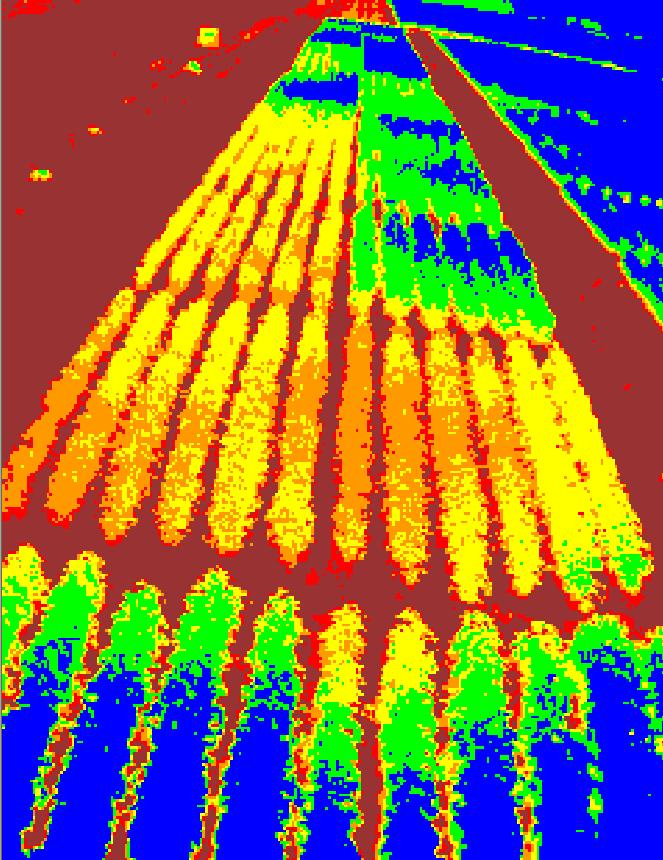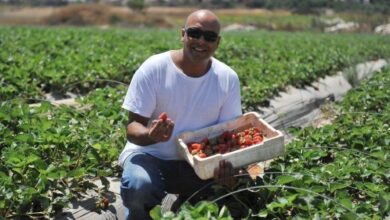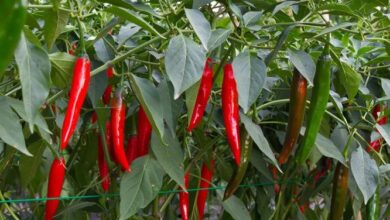Thermal Imaging for Precise Irrigation Guidance
Optimizing irrigation by using thermal images to map the variability of water potential in the field
Victor Alchanatis, et al.

thermal imaging for mapping the water status of grape vines and cotton: to guide irrigation by temporal and spatial needs
current irrigation methods, by applying water uniformly to the whole field on the basis of average conditions, do not take into account the variability in water uptake among plants. the lack of uniformity among plants reduces the quality of the yield. for example, the lack of uniformity among vines results in variability in grape quality and in the rate of ripening, which effects wine quality.
one of the basic principles of the concept of precision agriculture is to fit resources to needs, according to temporal and spatial variability in the field. irrigating according to the principle of precision agriculture may improve water distribution in the vineyard, help reach uniform maturity, and consequently, improve wine quality. the first step in the process is to map the variability in the water status of the plants in the field. one way of doing this is to measure the stem water potential and the stomatal conductance of each vine.
this approach is inefficient and uneconomical. a better method is to use aerial imagery or satellite imaging, provided that the relation between the water status of the plants and radiation reflection or emission is known. it is known that there is a correlation between the water status of the leaf and its temperature. leaf temperature rises when the stomata close as a result of water stress. consequently, we developed a method to map the variability of water availability in the field by measuring canopy temperature using thermal imaging.
wine grapes: during the past three years, an experiment was conducted to develop a model for determining the quantitative relationship between canopy temperature and plant water conditions, as a future guide for the precision irrigation of vineyards. during the years 2005-2007, vines of wine grapes in a vineyard on kibbutz yiftach were irrigated at three levels of water application.
figure 1 is a thermal image of vine rows in the 2005 experiment showing the three levels of temperature corresponding to the three levels of water application.
.jpg)
|
|
|
figure 1: thermal image of three vine rows in an irrigation experiment. three levels of canopy temperature are clearly visible along the rows corresponding to three levels of water application.
|
the crop water stress index (cwsi) was calculated on the basis of canopy temperature, as obtained from the thermal images, air temperature (after 5 degrees centigrade were added) and the temperature of artificial reference surface. there is a statistically significant correlation between cwsi and stomatal conductance, albeit measurements were taken under various meteorological conditions and during different years. on the other hand, though the correlation between stem water potential and cwsi were not as high as for stomatal conductance, the regression lines were similar in both the slope and the intercept.
the fact that there were good relations between physiological measurements and thermal indicators during two different years establishes the potential of using thermal images for the mapping of plant water status in wine grape vineyards, as well as for guiding irrigation.
cotton
during the past four years, a similar experiment to the one described for vineyards was conducted on cotton. figure 2 represents the relation of crop stress index (cwsi) to leaf water potential. there is a highly significant correlation between the two variables, although data was collected at various locations under varying meteorological conditions, during different years and using different cotton varieties.
.jpg)
|
figure 2: thermal stress index (cwsi) in relation to leaf water potential. data from various locations and different periods during the years 2003 and 2005-2006 |
mapping of water potential in the experimental plots
diagonal thermal images of the plots were obtained in the field crops experiment station and on kibbutz revadim in order to map the water potentials of the experimental plots. the temperature values in the images were converted to cwsi values, which in turn were converted to leaf water potential (lwp) values by applying the model. figure 3 presents the crop water status in terms of lwp for the field crops experiment station.
.jpg)
|
figure 3: mapping of leaf water potential of the experimental plots at the field crops experiment station – july 4, 2006 |
mapping of water potential in a commercial field
aerial thermal images were obtained from an aircraft flying over a commercial cotton field. on three periods during the summer of 2007 we obtained such images over the cotton fields of kibbutz megido. figure 4 is a map of leaf water potential obtained in the same manner as shown in figure 6. this map is confirmation of the previous model presented. despite its limitations, the aerial image taken in 2007 yielded a good estimation of the condition in the field. this fact establishes the possibility of using thermal images and the model to map the variability of water potential in the field, in order to guide irrigation temporally and spatially
authors:
victor alchanatis, yafit cohen, shabtai cohen, moshe meron, amos naor, markus moler, yehoshua serang
victor@volcani.agri.gov.il
(published in israel agriculture, 2009)




